Solar collectors in the West are treated as a "green alternative" hydrocarbon fuel, but in Russian everyday they have not yet been widespread. Most likely, the reason lies in the ignorance of potential users. After all, with proper use, the solar collector completely pays for itself even in our, rather severe, climate.
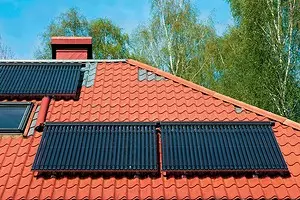
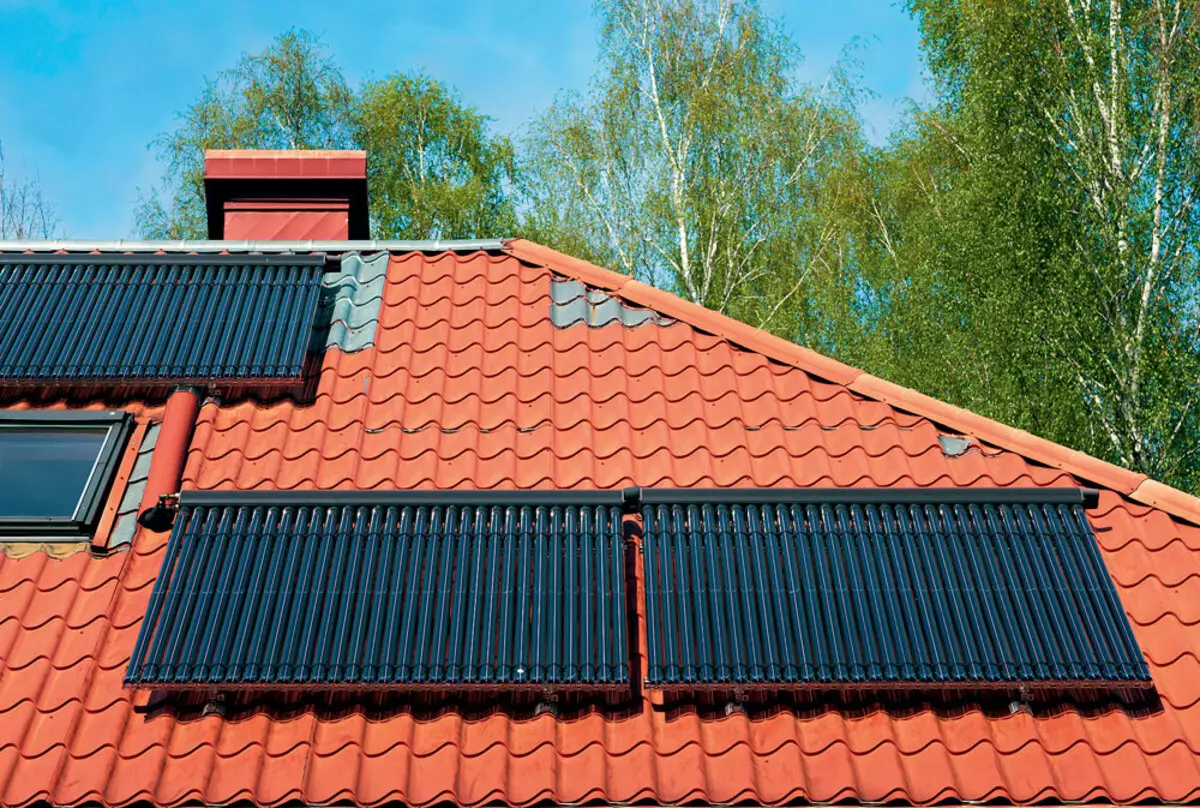
Photo: Legion-Media
The idea to use the heat of the sun for water heating is not new. In many country farms, there is a special barrel or other similar container, put up for the right rays of the sun. In the morning, ice water from the well is poured into the barrel, and in the evening it warms up to comfortable temperature and is quite suitable for washing, washing or, say, watering heat-loving plants.
Modern heliosystems work according to a similar principle. The sun's rays are heated in a special coolant fluid collector, which enters the tank with the heat exchanger and through the latter prepares water for the needs of the consumer. As a coolant, as a rule, a mixture of water and antifreeze is used, not freezing at minus temperatures. In addition to the above elements, the system usually includes a circulation pump pumping fluid (exist, however, and systems with natural circulation), as well as electronic control and control devices that regulate the system operation.
What mistakes most often allow buyers when choosing a helium system?
As a rule, they want to get 100% of the energy from the solar collector, without considering that the sun cannot be "turned off", that is, stop the heating at will. As a result, the system overheats, especially due to the lack of water treatment in hot summer days. Installation should be selected for the hottest period, and in more cold days, use an additional heat source or solve the heat reset problem, for example, to provide curtains covering the collector.
Why are solar collectors not used for water heating in radiator systems of heating in winter?
There are several reasons for that. In particular, in winter, a lot of heat is consumed at night, respectively, the day it is necessary to create a significant reserve of hot water in the buffer tank for heating at night, which leads to additional costs (not counting the large number of collectors). In addition, in the solar collector system, a mixture of polypropylene glycol with water is circulated, and water in radiators. The heat transfer from radiators with a polypropylene glycol will be lower, so it will have to increase the number of heating devices. As a result, the system will be expensive, with a long payback period. A "Ariston" presented the heliumsystems of several types, both with natural and forced circulation. Systems with natural circulation - mainly for seasonal use. Their maximum efficiency should coincide with the period of application (summer). Electricity is not required for work, but you can connect a TEN if you need to fit at night. The effectiveness of such systems is lower than forced, but at the same time above the level of protection against overheating.
Sergey Bugaev
Product Specialist, Ariston Termon Rus Marketing Department
Top in turn
On average, over the year of the heliosystem covers approximately 60% of the need for hot water preparation. In the summer of the Heliosystem is able to fully provide her cottage. In winter or rainy, cloudy days it is used in conjunction with other sources of energy. As an auxiliary equipment, such as a gas, diesel or solid fuel boiler may appear. In this case, the collector and boilers are connected to the so-called bivalent Baku - that is, Baku with two built-in heat exchangers. There are also boilers with three heat exchangers to connect three different sources, but they are less common.The bunch of "Heliosystem - the boiler" is so popular that most large manufacturers of heating equipment (Ariston, Baxi, Bosch, Buderus, De Dietrich, Viessmann) offer models of both types. Thus, you can assemble the system with a single control device. For example, Ariston, the work of the boiler heliosystems is adjustable using the Ariston Sensys control device, ViSessmann is the Vitosolic controller.
Collector design scheme
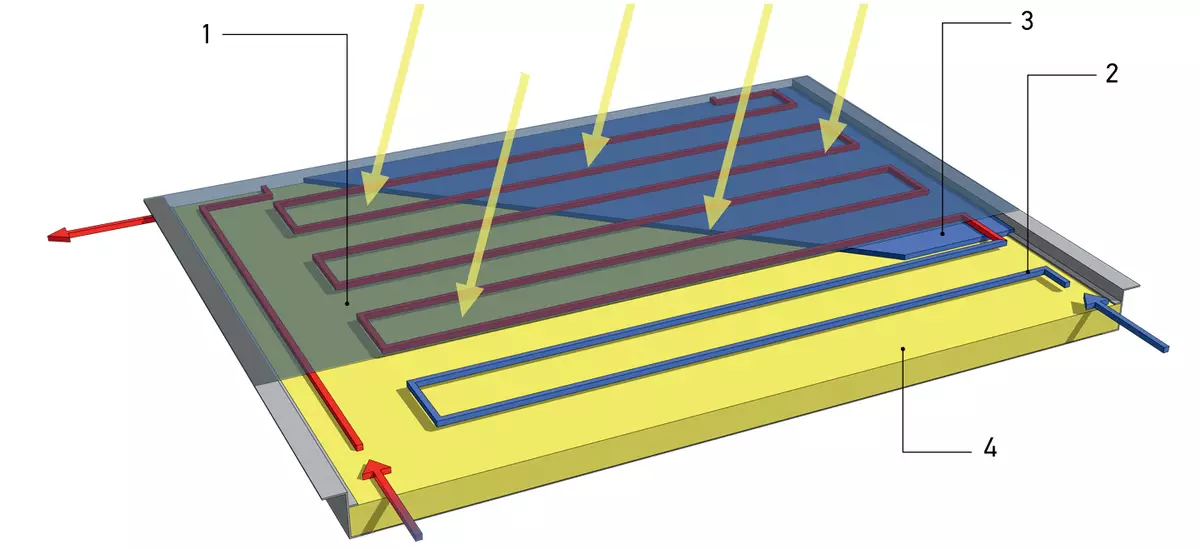
Figure: Igor Smirhagin / Burda Media
1 - urban glass; 2 - absorber with high-selective coating; 3 - double heat exchanger of the Meand-Povo type; 4 - base from aluminum alloy and thermal insulation
Flat collectors work more efficiently in summer and with direct solar radiation, and vacuum, on the contrary, better manifest themselves in the conditions of scattered radiation in winter and in the period of partial cloudiness
Pipe or plane?
Flat-panel and tubular models of solar collectors received the greatest distribution. They have their advantages and disadvantages.
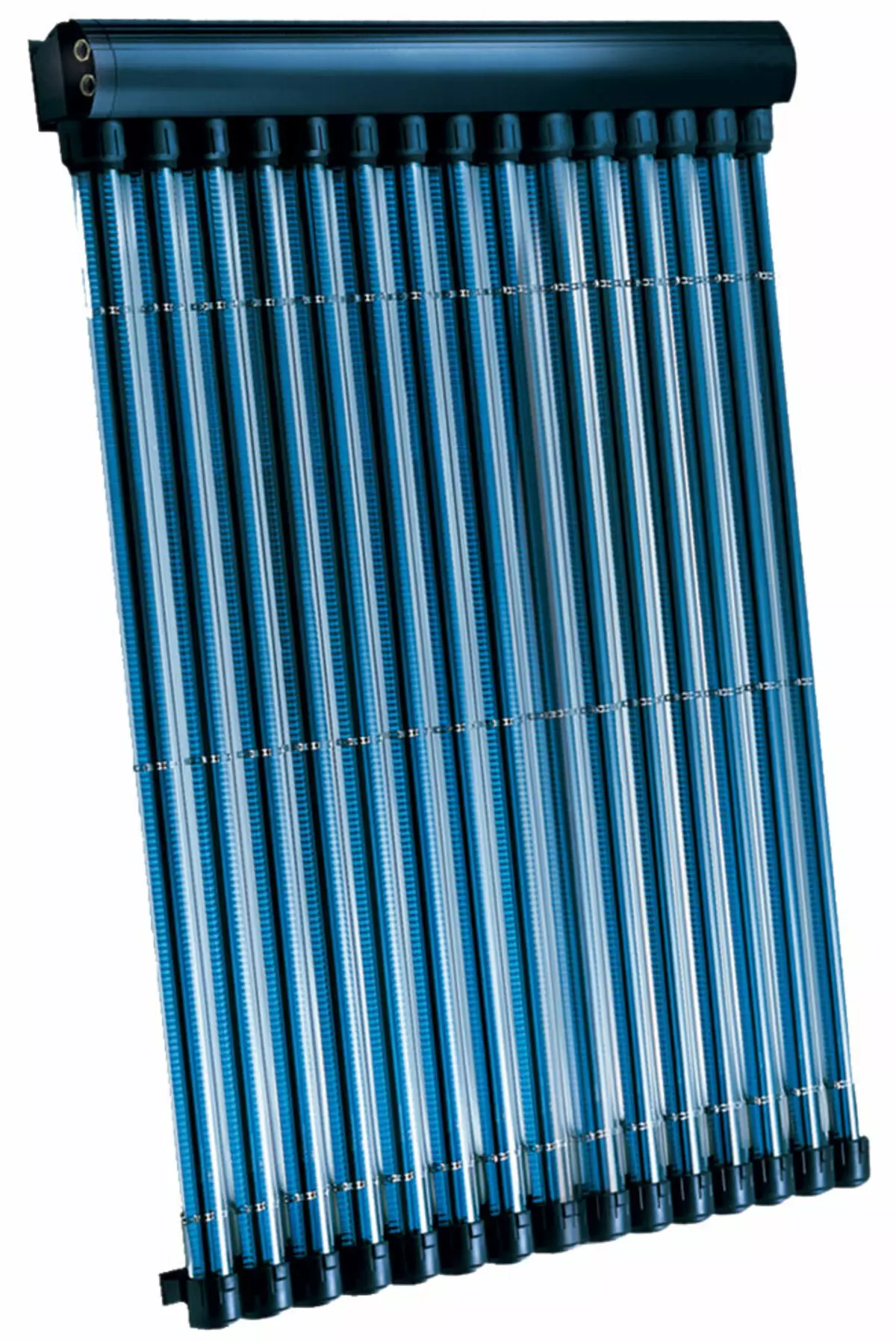
Photo: Ariston.
Vacuum solar collector Kairos VT (Ariston) for systems with forced circulation and increased efficiency. It is possible to rotate pipes for optimal energy absorption.
Flat collectors outdoor resemble solar panels. And no wonder: their outer plane is a rectangular panel of shockproof glass. Under it is an absorber - an element absorbing solar radiation. The surface of the absorber turned to the Sun is shredded by a special coating, and the heat exchanger tubes with a heat transfer fluid (see drawing) are laid under it (see figure). Due to the selective light transmission of the glass inside the panel, a greenhouse effect is created: freely penetrating the inside the sun's rays heat the absorber, which begins to reflect the long-wavelength rays, the latter do not pass through the glass and cannot leave the collector.
In the vacuum tubular collectors, instead of a flat absorber, vacuum double-wall glass pipes with a reflective coating applied to their inner surface are used. The design works as a "thermos on the contrary": the sun's rays pass through the glass and heat the heat exchanger arranged inside the tube.
It is believed that solar collectors are effective only in southern regions and countries, but a number of projects of private houses with heliosystems have already been implemented throughout the European Russia, in the Urals and Siberia
How many "squares" do we need?
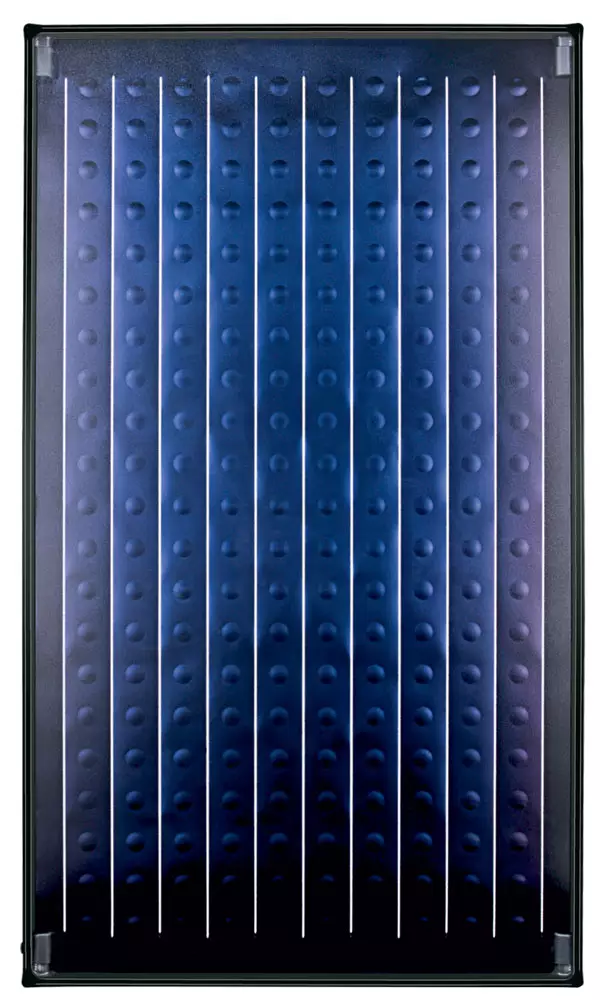
Photo: Buderus.
Solar collector Buderus Logasol SKN4.0 (65 thousand rubles). A copper absorbent surface with high-selective coating is used. Durable protective glass is characterized by high traffic lights (up to 92%)
The area of the solar collector depends on the calculated performance of the helium system. For example, you want to get hot water for washing and household needs. First of all, you need to choose the heating tank of the desired size, the algorithm for calculating its capacity is the same as for cumulative boilers with electrical or gas heating (about the selection of the boiler, see the article "Hot Heart of Baku", No. 3/2014). The volume depends on the number of users and the type of equipment of the bathroom (for example, a font or shower).
Having determined the scope of the boiler, you will learn the performance of the solar collector and, accordingly, calculate their area and calculate what space is necessary for mounting. For a more accurate calculation of cost, additional parameters may be required, such as the inclination of the roof and the angle between the horizontal projection of the perpendicular to it and the southern direction. Ready algorithms are used for calculating, so the professional will easily fulfill this work. Many manufacturers and installers make calculated for free.
How much are "squares"? The price largely depends on the manufacturer. Cheap Chinese can be purchased for 10-20 thousand rubles. For a 2 m² collector module. A similar product of European production costs 3-4 times more expensive. Another 30-60 thousand rubles. Controller and boiler will cost.
Usually, solar collectors are installed in such a way that they are located higher than the capacitive water heater. Pipelines connecting collector and water heater are laid with a constant slope and should be as possible short. It is necessary that they are resistant to temperatures up to 150 ° C and a pressure of 6 bar, so it is better to use copper pipes. As for thermal insulation, it also has certain requirements: thickness, resistance to high temperatures, ultraviolet, etc. The optimal option is to apply special Duo Tube pipelines: direct, reverse lines together with a cable for a collector sensor are combined into a common casing of thermal insulation (With protection against ultraviolet), and on top covered with material that will withstand the blows of the bird beaks.
Olga Kovalenko
Head of the Renewable Energy Sources De Dietrich »Rusklimat Termo Company
The optimal slope of the collector plane
The solar collectors panels are located on the inclined plane in such a way that during the day the sun's rays fell on them at an angle, as close as possible to the straight. The optimal slope of the reservoir plane corresponds to the geographic latitude of the terrain and is, for example, for Moscow 57 °. For the northern hemisphere, the southern direction of the "view" of the panel (say, the southern rod of the roof) is suitable. Of course, other items should not block the collector from the sun. It is not always possible to observe all the conditions, so when installing collectors, prefabricated or welded metal structures are widely used.
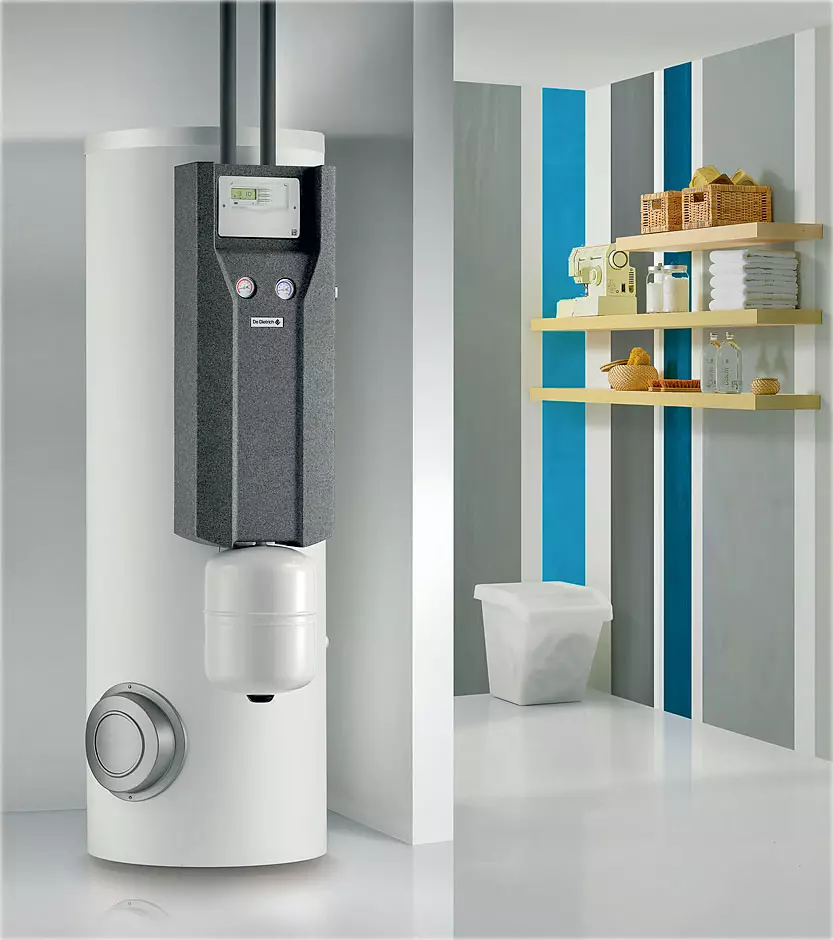
Photo: De Dietrich
Water heater de Dietrich BSL 200 (161 thousand rubles). 225 l tank, from sheet enameled steel, thermal insulation 50 mm, two heat exchanger, magnesium anode to protect against corrosion, maximum pressure 10 bar
The easiest way when the required tilt of the panel corresponds to the roof slope. In this case, the additional tilt is not needed, and the collector will be installed on the assembly bus from the profiled metal. The tire is perpendicular to the rafters and relies on them using special rafting hooks. The distance between the hooks is calculated by reference tables and depends on the distance between the rafters and from the snow load. The rafter hooks are based only on rafters either on an intermediate doom (an additional reference corner is used) and should not be relying directly on the roof. The connection of pipelines is performed by means of press fittings or soldering solid solder.
Installing a collector is a responsible operation, because about errors of inexperienced or negligent installers, you will most likely find out when it is almost impossible to correct them. Therefore, it is better to apply to installers who have experience like this. The company's representative will inspect potential installation sites and make a conclusion about the possibility of placing a collector, and also calculates engineering elements of the assembly structure, taking into account the wind and snow loads.
In other countries, solar collectors serve not only for heating, but also to heal water in the pools: in this case, solar systems are commonly used with a special external heat exchanger
The most often heliosystems are used for DHW with two heat exchangers in the tank (one for collectors, another for the boiler). The efficiency of solar systems is much higher than what is considered. So, in the Bosch collector systems with an area of only 1.9-2.4 m2, it turns out to be quite enough to generate the right amount of water. However, efficiency is completely dependent on how correctly the system is calculated. In Russia, the spreads received collectors of both types. The Bosch line presented flat solar collectors made in Germany. They are most reliable and able to work effectively all year round. The collectors are installed resistant to weather changes. Glass and absorber with a special structure that increases the efficiency of devices.Konstantin Eremikhin
Product Manager of the company "Bosch Tern"
Installation of a solar collector on the roof
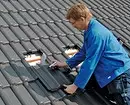
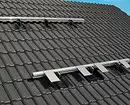
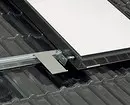
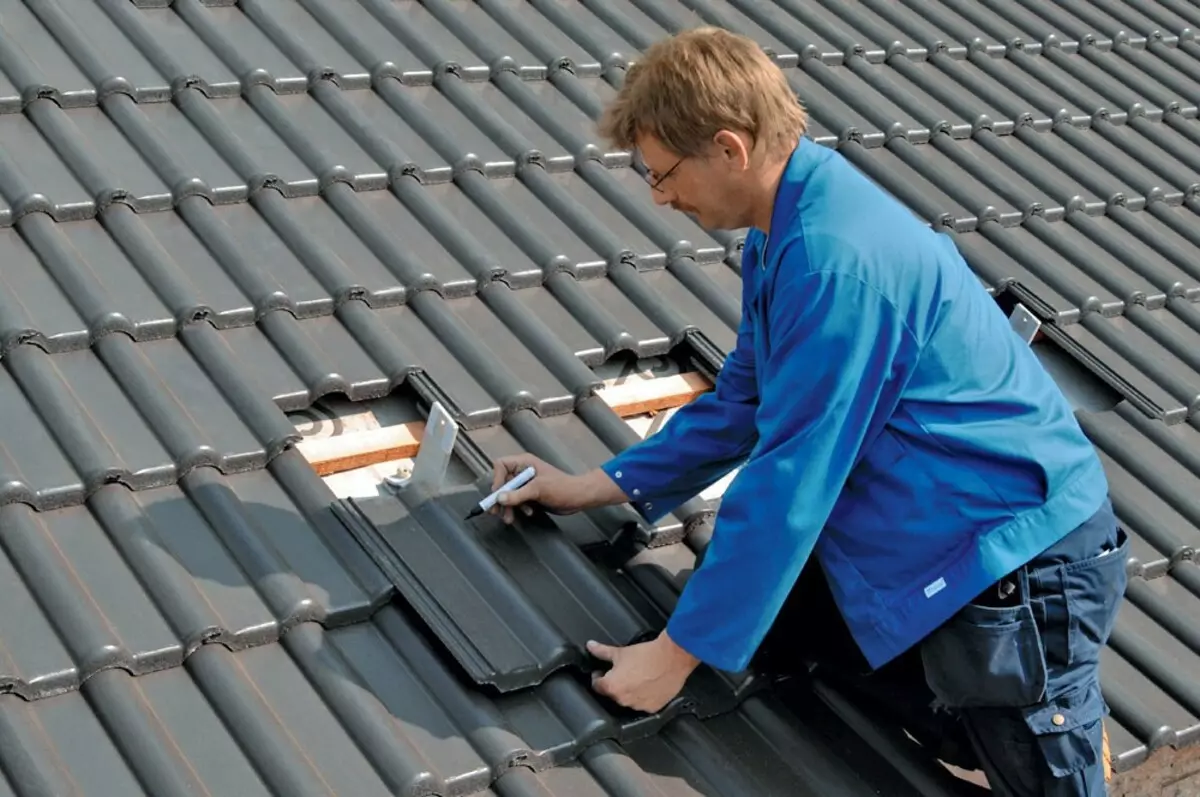
Supports are installed on the rafter, cutout is done in the tiled
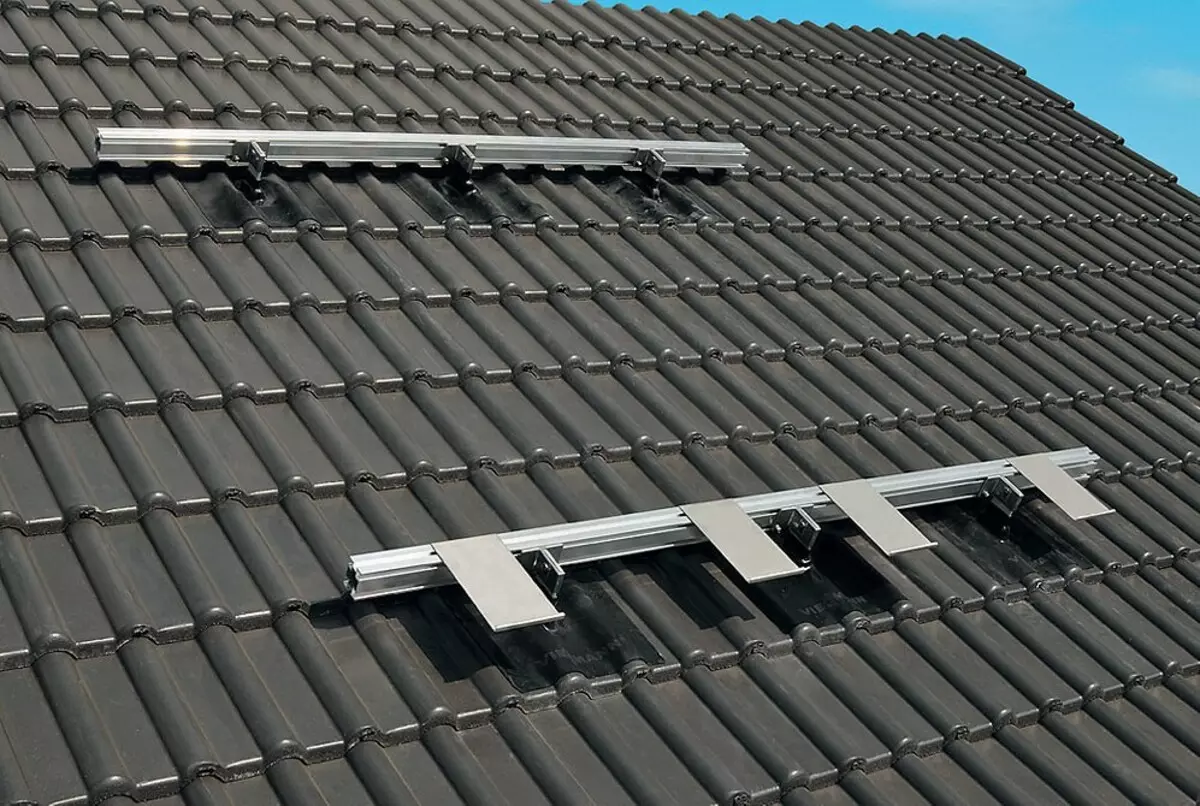
The seal seat is sealed
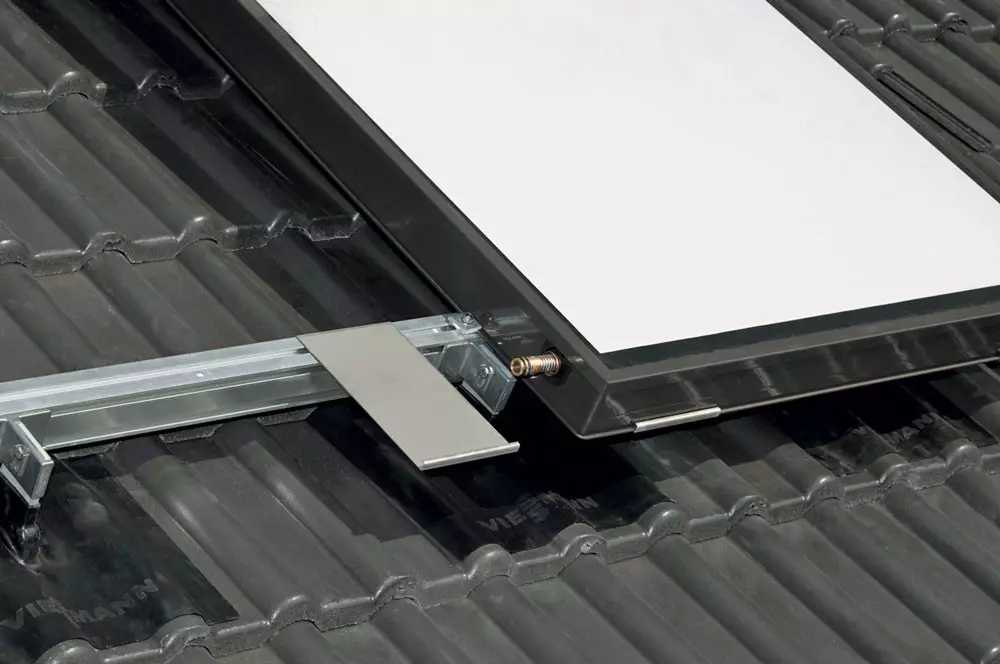
The collector unit is fixed with hooks attached to the rake. Copper pipelines in the circuit are combined with soldering solid solder or press fittings
Comparison of flat-panel and tubular collectors
| Parameters | Flat Pallen | Tubular |
| Cost | 20-30% lower than the vacuum of the same class | More expensive |
| Work during the day | The efficiency changes much during the day, from a minimum at sunrise to the maximum, when the sun in Zenith, then the efficiency is again reduced to a minimum | Due to the tubular form of the collector and the mirror effect, the sun rays are used more efficiently and efficiency almost does not change during the day |
| Work in cold season | Efficiency is 30-40% lower than that of vacuum | Higher (30-40%) efficiency due to smaller heat loss |
| Strength, Resistance to strikes | High | Low |
| Maintainability | Low | High (you can replace the damaged section) |
| Sailing | High (needed more durable base) | Average |
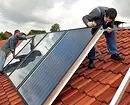
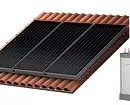
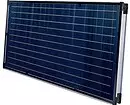
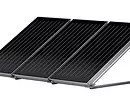
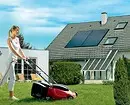
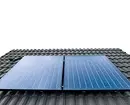
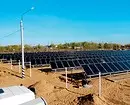
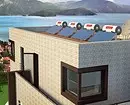
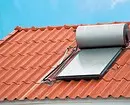
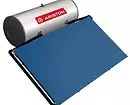
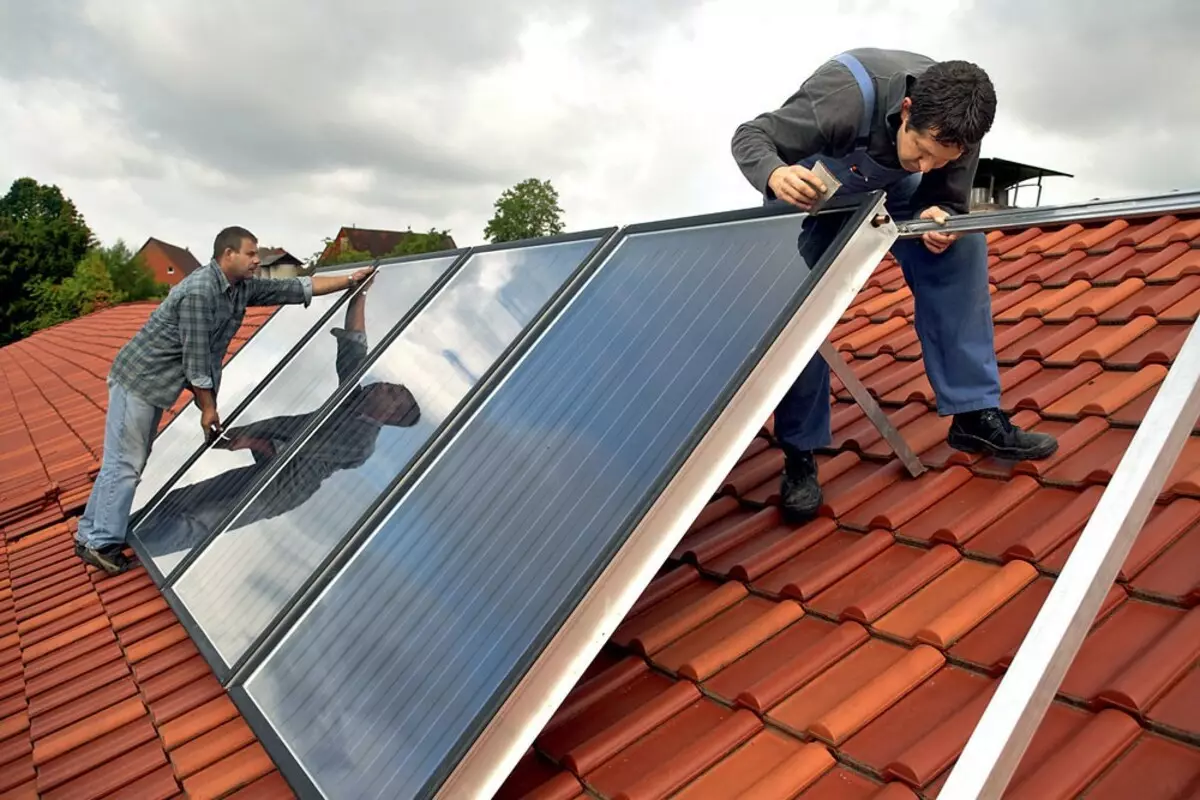
Solar collectors are mounted with a rigid mounting tire on four support hooks, two above and two below
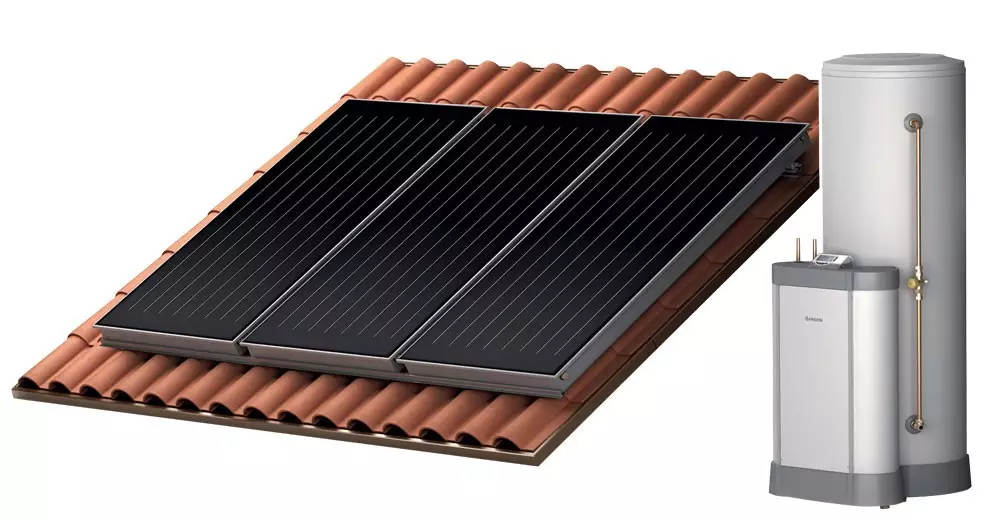
Sun Heat System Forced Circulation Circulation Kairos Macc CD1
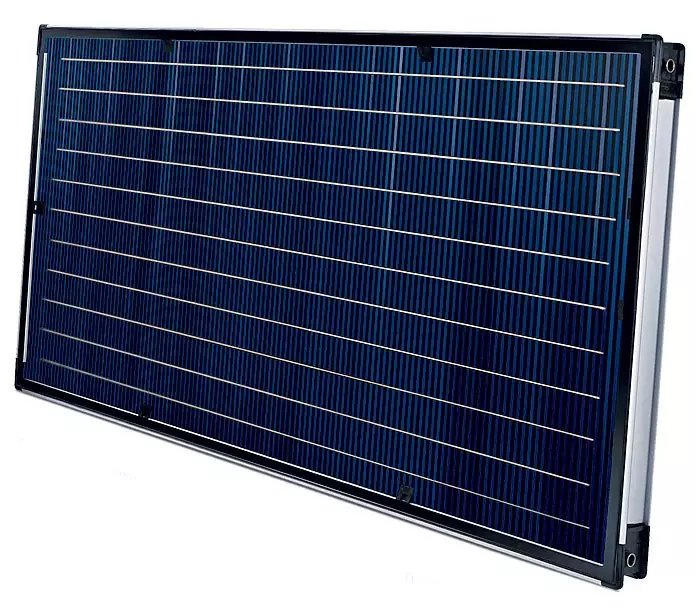
Kairos Solar Collectors for Horizontal Installation
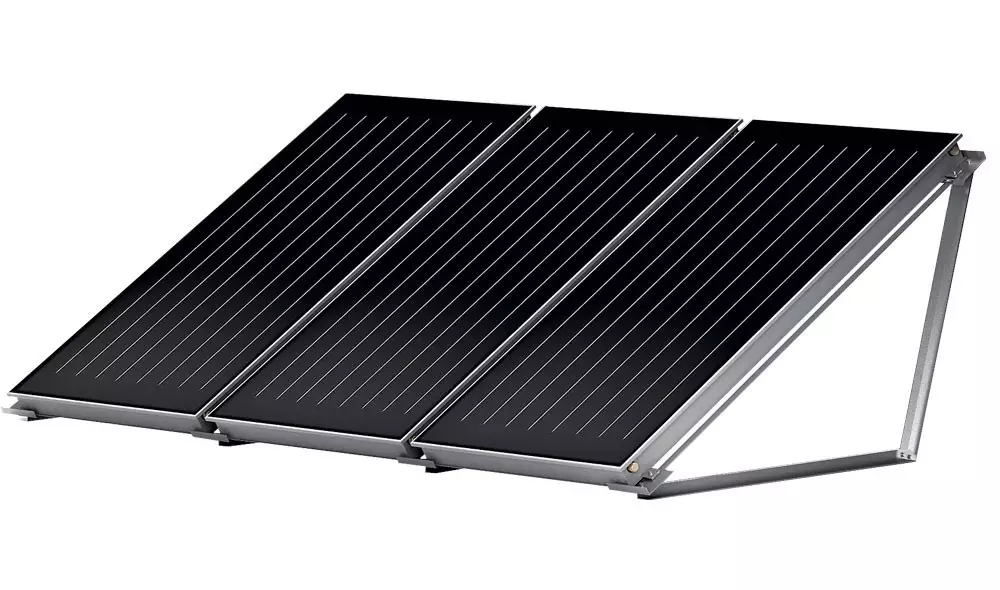
And vertical mounting
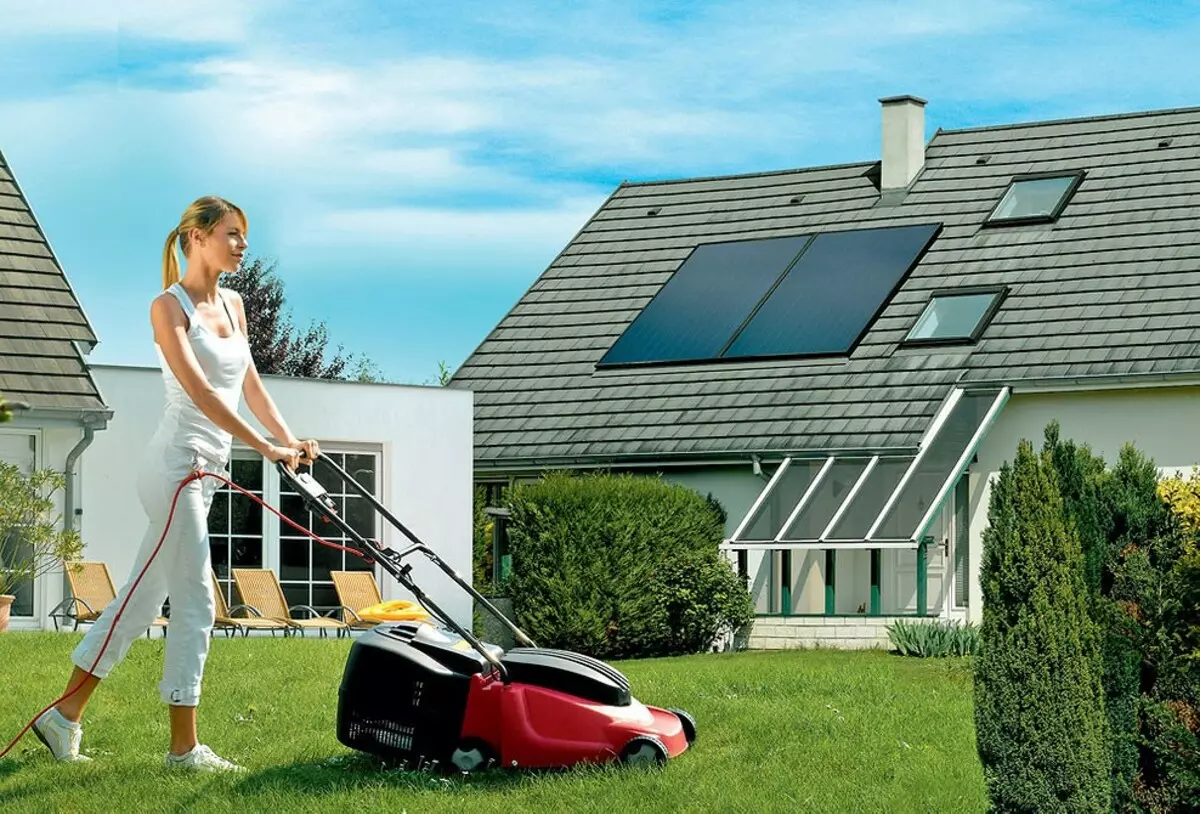
In good weather, solar collectors allow you to fully ensure the needs of homeowners in hot water
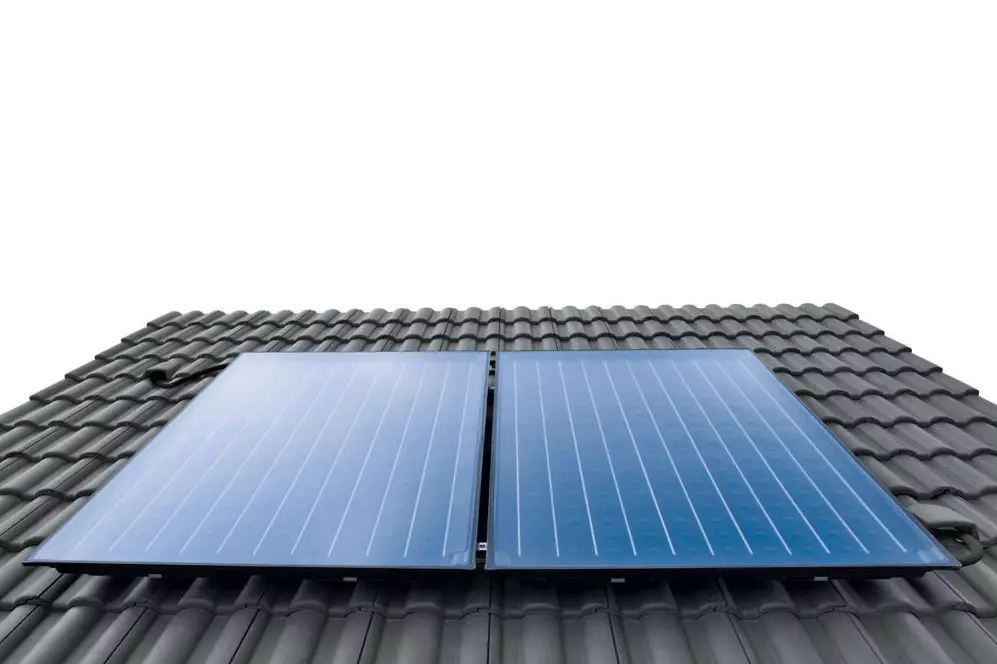
The variant of the diagonal connection of collectors (the cold liquid comes along the right lower nozzle and exits with the help of the left upper)
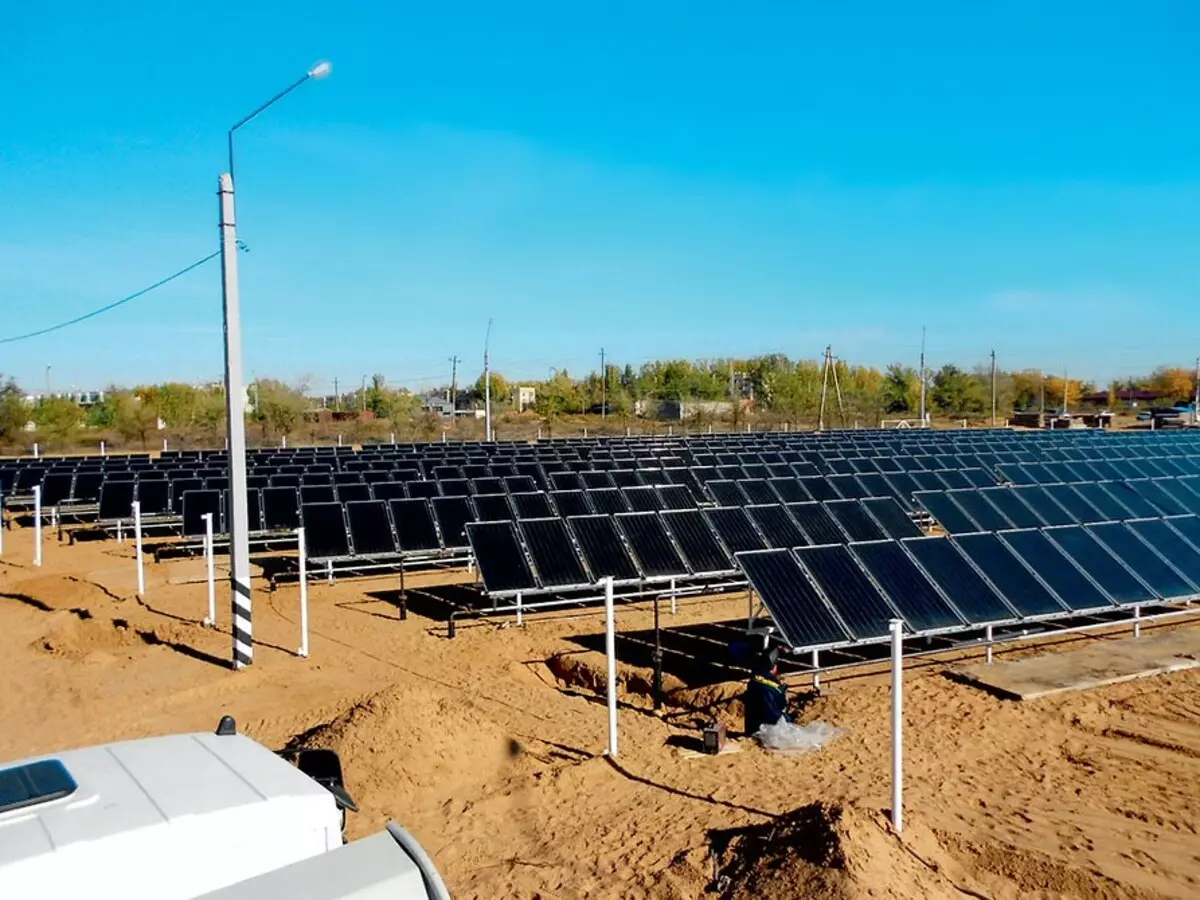
Solar collectors can be placed not only on the roofs, but also at any open place
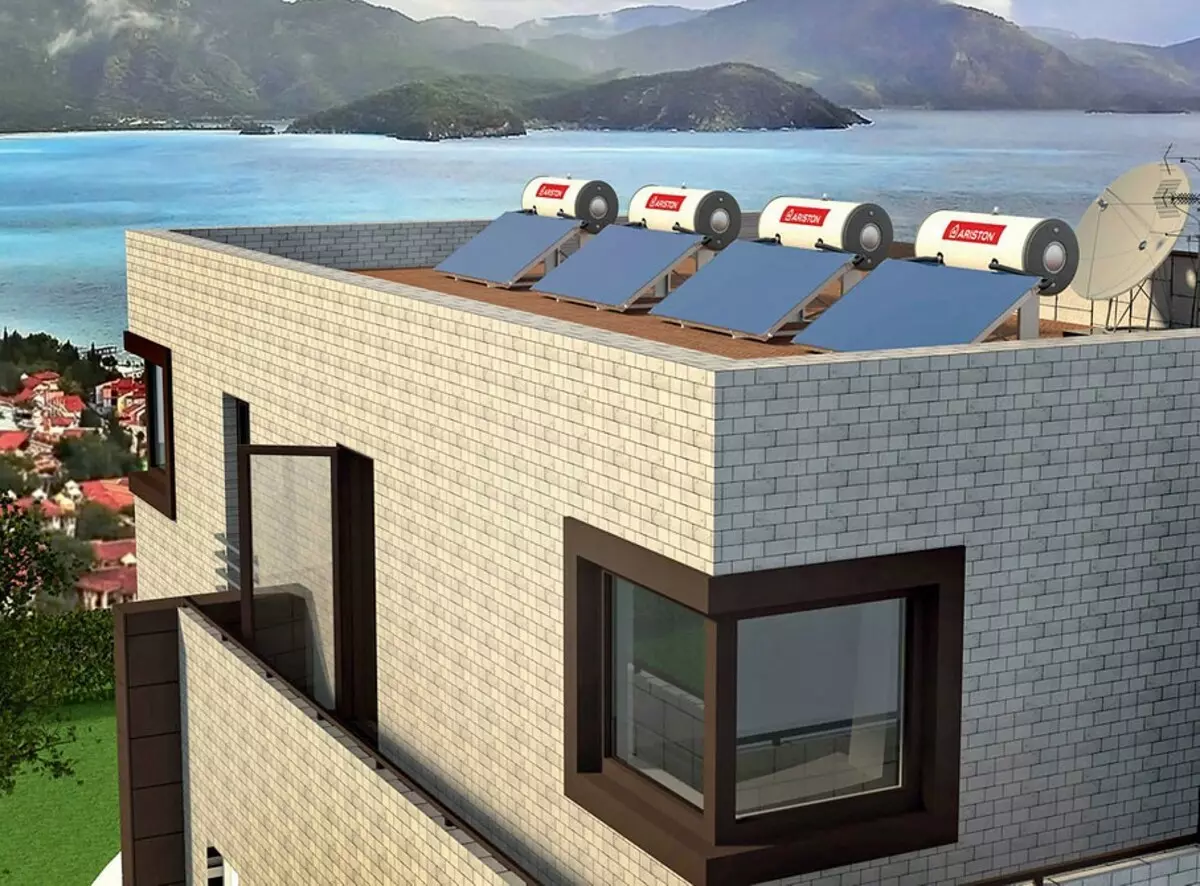
Abroad, solar collectors are firmly entered into everyday life and are actively used for utility needs.
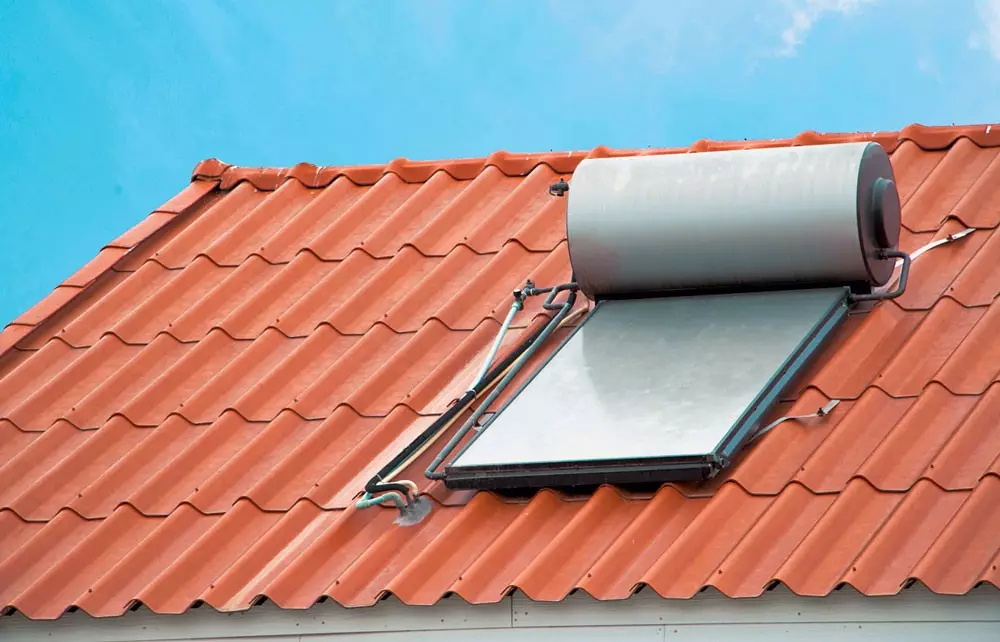
Summer complexes from a solar collector and a cumulative tank - a simple and effective way to ensure a house of hot water in the summer season.
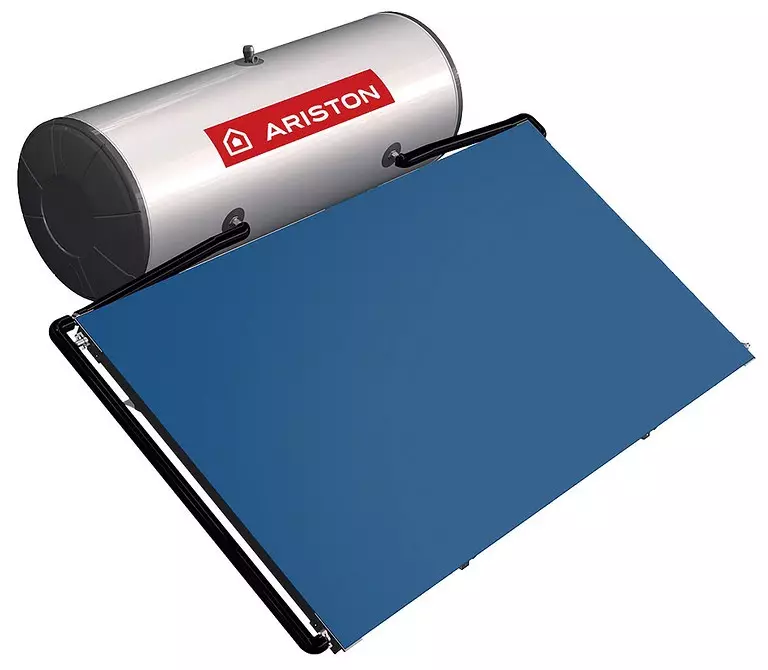
Description of the natural circulation system Kairos Thermo HF (Ariston) (110 thousand rubles)
